Chris Henry runs fleet profitability benchmarking and analytics for FreightWaves and facilitates the TCA’s TPP program. If you are interested in benchmarking your fleet’s performance with the best operators, join TCA’s TPP.
The data presented in this article come from analytics of over 230 truckload for-hire fleets, representing more than 70,000 trucks.
A wise trucker once said, “The only way to make money in trucking is to not spend it.” Truer words have never been spoken. This business is a game of razor-thin margins, and an infinite (and growing) number of risks and curveballs. This article is the first of two that will: 1) breakdown the cost components of operating a truck (and a trucking company); and 2) establish a financial framework for improved margins and bottom lines.
It’s very difficult for trucking companies to achieve higher than average rates per mile, per hour and per week. Due to low barriers to market entry, fleets and operators of all sizes are able to add capacity very easily to the market. As a result, shippers benefit from these hyper-competitive effects with rates that don’t typically capture the expense realities of trucking.
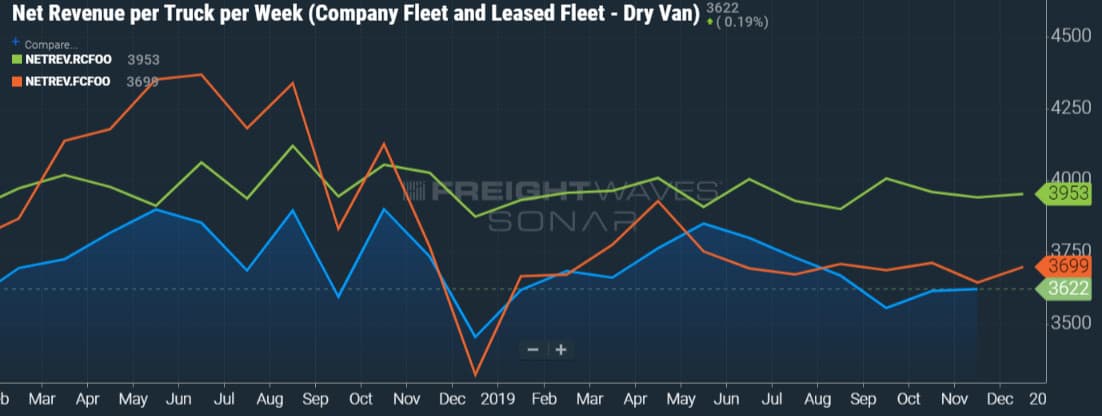
Total operating expenses in trucking (excluding very specialized operating models), range from extremes of $1.16 to $3.05 per mile when you simply take the best and worst from each of the categories below. Realistically, no trucking company could achieve an average total operating cost per total mile of $1.16, nor would they survive at $3.05 per mile. However, this article will illustrate the wide variances, and opportunity costs that operators realize on a day-to-day basis.
As the main pricing mechanism for trucking is the mile, it is important that industry participants understand their expenses relative to the miles generated by their trucks in a given week or month. Doing so provides an easier methodology to match operating expenses with pricing decisions.
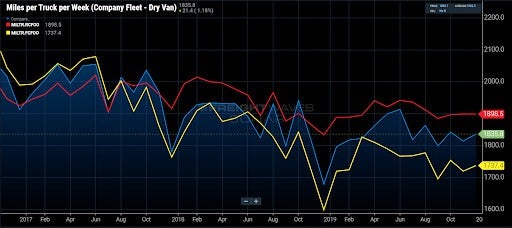
Total operating cost per mile summary table
According to the Truckload Carrier Association’s TPP fleet data (available to TPP members and SONAR subscribers), a for-hire truckload carrier will average between 1,700-1,900 miles per truck per week throughout the year, except for December.
Average operating expenses for a carrier on a per mile basis:
| Expense Category | Low Range | High Range |
| Driver Compensation | $0.48 per Mile | $0.83 per Mile |
| Fuel | $0.40 per Mile | $0.55 per Mile |
| Equipment Financing | $0.00 per Mile | $0.40 per Mile |
| Maintenance | $0.09 per Mile | $0.40 per Mile |
| Insurance | $0.06 per Mile | $0.18 per Mile |
| Variable Driving Expenses | $0.01 per Mile | $0.09 per Mile |
| Non-Driver Compensation | $0.06 per Mile | $0.30 per Mile |
| Fixed Overhead | $0.06 per Mile | $0.30 per Mile |
Source: Truckload Carriers Association TPP Program for all carriers in the program. Data is available in SONAR.
Driver compensation ($0.48-$0.83 per mile)
A disclaimer – for independent contractors (ICs), driving labor does not equal ‘profit.’ The most successful ICs pay themselves a market wage in addition to projected profit. Whether the amount is actually ‘paid out’ as wages is another issue unique to the personal tax situation, and state/provincial residency of each IC. Driving labor expense is the single largest expense for trucking companies. Depending on the geographic region, operating mode and length of haul, the combination of driving compensation, benefits and payroll taxes ranges from 28% to 50% of revenue. Industry averages for total driving labor expense per mile range from $0.49 to $0.83 ($0.67 per mile on average). This amount includes base wages, incentive compensation, per diem, accessorial pay, workers comp, health insurance and retirement benefits.

Fuel ($0.40-$0.55 per mile)
Fuel represents the second-largest variable operating expense for any company or owner-operator. However, the difference between a top and bottom performer in trucking is directly correlated to the ‘net fuel expense’ calculation. Net fuel expense is simply the sum of gross fuel receipts, including taxes and additives minus fuel surcharge generated for the same time period. Top-performing trucking companies and ICs focus on some of these items and practices to reduce the gross fuel spend:
- Reducing speed and idle time, and maintaining proper shifting patterns
- Implementing fuel-saving technologies, equipment and practices (e.g. APUs, truck and trailer fairings, etc.)
- Reduce empty miles (unless it is more advantageous from a margin/yield perspective)
- Maximize ‘in network’ fuel spend. This one occurs when economies of scale really take hold, as fuel discounts are directly related to the volume of fuel purchased – the more fuel purchased, the lower the net fuel per gallon/litre.
Typically, gross fuel expense averages between $0.40-$0.55 per mile. However, when you factor in fuel surcharge and some or all the practices above, the net fuel spend can be dramatically less. Some trucking companies go further than most, utilizing financial instruments to ‘hedge’ their fuel expense from changes in the cost of diesel.
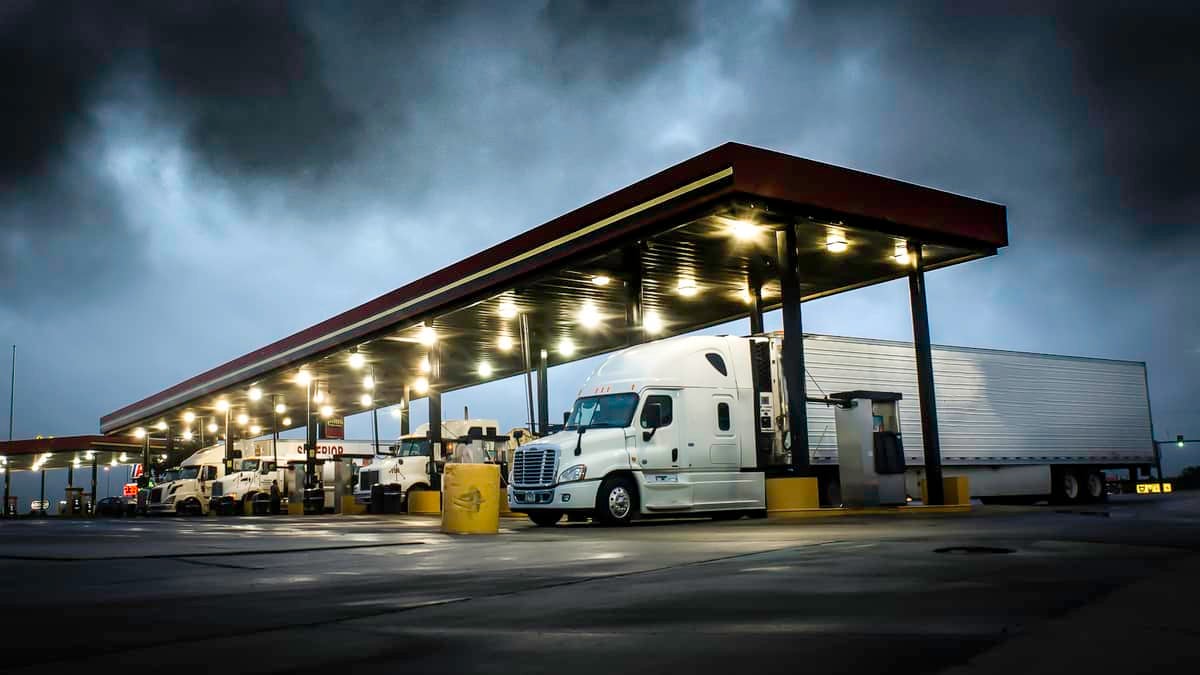
Equipment financing expense ($0.00-$0.40 per mile)
To be a trucker, you need a truck. Being mechanically inclined provides a distinct advantage for independent contractors and fleets alike. Being able to properly maintain equipment allows ICs and trucking companies to extend the average age of their trucks, and thereby reduce the large expense related to financing both trucks and trailers. In recent years, tax law changes have permitted accelerated capital equipment depreciation rates, meaning if a trucking company still owes money on its trucks and trailers, it is likely able to net more dollars after tax than before these changes. In recent years, fleets have reduced the average age of trucks to 2.3 years (on average). This trend is based on a growing school of thought that younger equipment reduces total tractor lifecycle expense (although this may be debatable based on original equipment manufacturer, specifications and operating conditions). In addition to traditional note financing, fleets and ICs alike have standard lease options available to them, along with Fair Market and Full-Service leases (the former taking care of the majority of maintenance expenses for a premium charge). As a percentage of revenue, due to the wide variety of financing strategies implemented by fleets and ICs, the cost of financing trucks and trailers ranges from 0%-30%.
Maintenance ($0.09-$0.40 per mile)
Based on my observations of over 200 trucking companies throughout North America, maintenance represents the largest margin opportunity for most companies. To be clear, maintenance expenses should capture all labor, parts, tires, supplies, oil, lube and fixed overhead (e.g. tools, shop rent, utilities, etc.). The difference between the top performers on maintenance and the bottom performers range from a low of $0.09 per mile to over $0.40 per mile! You read that right, that’s a $0.31 swing from top to bottom – think of the money going out the door! For many smaller fleets, especially those that do not use traditional accrual accounting, I suggest capturing the total maintenance spend over the past six months and keep rolling that average forward as each month unfolds. This reduces swings in large repairs from month to month and provides a clear picture of your maintenance expense.
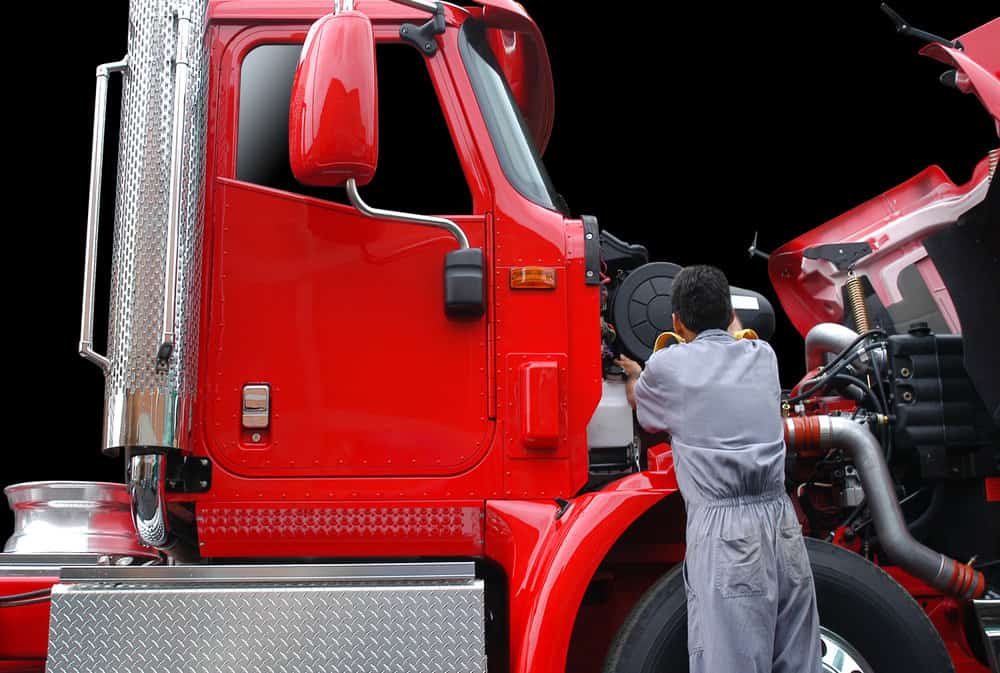
Insurance ($0.06-$0.18 per mile)
Insurance, for the purposes of this article and exercise, is the total cost of liability, physical damage and cargo insurance premiums and deductibles, plus the expense of any other accident-related damages. The latter item is one which sometimes gets ignored or is inappropriately categorized as a maintenance expense. In recent years the cost of insurance has been dramatically affected by the growing trend of nuclear verdicts in multiple jurisdictions and continued general accident repair expenses. This trend has led more companies and single truck operators to shoulder more of the burden of insurance themselves through higher deductibles and captive insurance arrangements. Increasing the deductible per incident (retention) also raises the risk of financial harm in the event of an accident. As such, a prudent operator should invest any insurance expense savings in practices and technologies to reduce the probability of accidents in the future, such as in-cab event recorders, collision mitigation tech and enhanced entry-level driver driving.
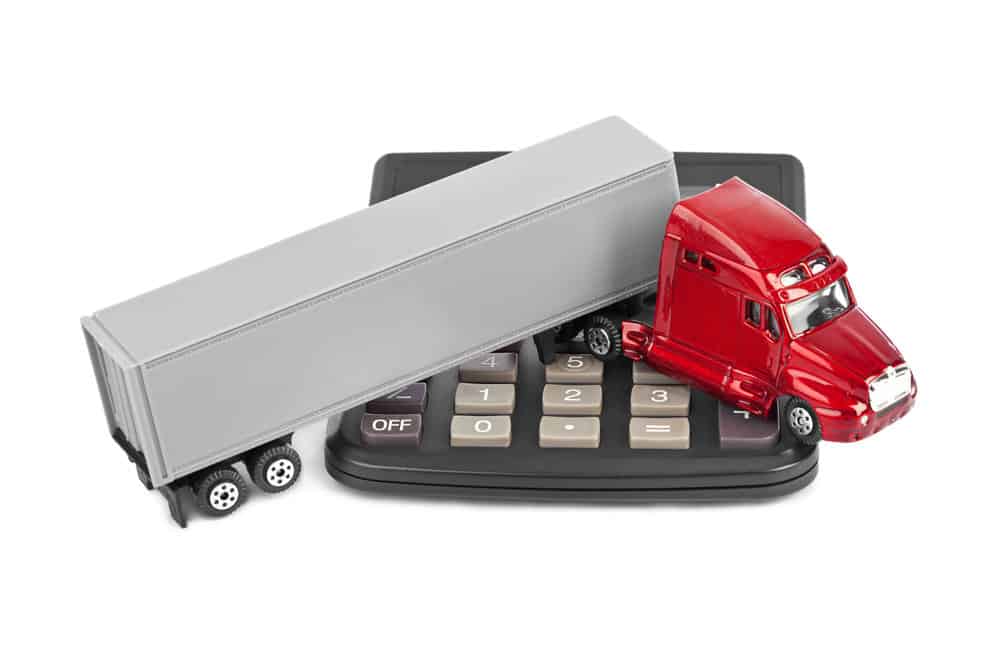
Variable driving expenses ($0.01-$0.09 per mile)
This category is the most nuanced of the expense categories, and the last of the ‘variable’ operating expenses. This group captures all the permits, tolls, fines, along with motels, lumper fees and driver orientation/screening and recruiting expenses (which can be significant depending on the size of operator/company). As such, it is a bit of a ‘catchall’ for those items that don’t fit cleanly into one of the other large buckets. Top performers keep an eye on the above items to ensure that they aren’t a symptom of inefficient dispatch (layovers), unsafe practices (fines), poor routing decisions (tolls) and bad culture (increased turnover).
Non-driver wages & benefits ($0.06-$0.30 per mile)
This is an area in which independent contractors have an advantage, as they handle all sales, administrative and operating activities themselves. However, they are very susceptible to spot market changes, and the reliance on brokers or load boards for freight. For those that seek to grow their fleet, you need to start hiring people for sales, dispatch, finance and safety roles. Depending on the operating mode (trailer type) and length of haul, a trucking company will have three to six drivers for every one non-driver. For smaller fleets, the expense of non-driving positions represents as much as 15% of revenue. As a company grows, and implements software and standard processes, the cost of non-driving activities can be reduced significantly (by 4-7% of revenue).
Fixed overhead ($0.06-$0.30 per mile)
The last of all operating expense categories is fixed overhead expense. This category will capture all rent, office supplies, software, utilities and communications expenses (among many other possible expenses). Generally speaking, from a percentage of revenue perspective, the cost associated with this category should closely approximate the cost of non-driver wages and benefits.

Summary
You cannot simply take the sum of the lowest values and highest values for each of the above categories to establish total operating expense per mile range for trucking. This industry has an endless number of modes and operating models, not to mention people and aptitudes. Being a top performer in one category doesn’t necessarily equate to top performance in multiple categories. However, understanding the numbers and their place in your margin equation can be the difference between survival and realizing the American (and Canadian) dream.








Armando
Can someone please help me understand why is it that operating cost to a truck could be up to $3 a mile. Yet we see the $1.00–$1.30 per mile loads being offered by freight brokers? How in the world do Freight brokers quote shippers without knowing the operational cost to the truck? It puzzling to think that brokerage firms are getting all this loads yet offering them on load boards and such low prices. Seems to me that these popular freight brokering firms making a lot of noise in the industry don’t have a clue about the trucking industry and are coming in selling their technology to shippers. When in truth they should be fighting for a better rate to cover the truck and then they could markup their profit. Secure truck operational cost first should be the main priority. Any thoughts anyone?
Rick burns
Due to expenses of trucking into today’s world owners are paying a to high of a cost to operate I have been doing for almost 40 years earnings don’t weigh the out come of time of commission of a truck drivers loose money due to companies waiting for loads or unloading loads revenue is eat up buy states in cost
Deregulation has kill ownership the federal government is killing trucking by not giving enough tax breaks insurance that drivers have to pay does not have the lawyer protections in place to defend truckers over the road cost is to expensive we need to be in umbrella all across the nation to buy and repair at a low cost ‘ also need delivery insurance due in to breakdowns and accidents’ truckers need a 1 million per of insurance per yer for the well being’ unloading cost needs to change truck needs to charge 1000.a day to shippers and receivers due to the cost of time ‘ loads need to be certified with the states so they cannot be stopped until destination just they have at the boarder .
Now that being said this would help drivers to come back in to the business with low interest loans with so owners for business ! Let make a change for trucking for good safe trucking.
CM Evans
Let’s address some of the wording in this article and others going forward not only here, but throughout the industry.
There Are two groups relative to the category of (IC) as written here.
An (IOO-Independant Owner Operator) and the (IC-Independant Contractor). The latter is simply that a contractor, leasing his equipment either thru or too a carrier. His barrier to entry is a down payment on a truck and perhaps a few thousand additional dollars to get started. On the side of the truck is will state operated by ABC Carrier.
The former is a for hire carrier w/greater investment/risk and would be more relative to this article.
If it seems I’m parsing words, I am. Too often these two groups are categorized as one throughout the industry media and they are not. When you write above regarding the low barrier to entry, it is the latter you are writing about and this group rarely affects the spot market as they are not operating in it, they are supporting the larger carriers at a lower cost that may have a small footprint in the spot market.
Although the barrier to entry may be lower for a single truck IOO compared to a fleet of any size, and while a few enter w/little to no knowledge/experience they learn quickly or are weeded out. Those that survive have earned/deserve to be titled separately as IOO’s.
Appreciate the article, look forward to reading part 2 of the series.
G.Maple
Amen C.M.Evans.IC here.
Steven J Lapp
Great article! I would however add a few things to your cost analysis. The first being very difficult to accurately expense, and that is the cost of downtime due to maintenance. It’s not easy to analyze, because the driver may or may not be under a load at the time, or may have planned scheduled maintenance around scheduled personal time, but it is still a cost, similar to a salesman that doesn’t make a sale. He can’t take the sales loss off his taxes, but if he continues missing sales he won’t be in business very long. The second is ROI, Return on Investment. That’s the return you would get if, instead of dropping $165k on a new truck, you instead put that $165k into the stock market or real estate. This number is hard to pin down with 100% accuracy, but one can generally use past averages of those investments to arrive at a workable number. The third expense is cost of equipment replacement. In an ideal world, any business should strive to reduce or eliminate as much debt as possible, so this means that prospective future equipment expenses should be budgeted for, rather than relying solely on debt financing. This is why many drivers never come to an accurate expense per mile calculation. Taking into account the three things I mentioned, I doubt it’s possible for most small carriers to achieve realistic operating expenses under $2/ mile.
CM Evans
To all readers, we’re gonna have to start looking at revenue in a different perspective beyond (RPM-Revenue Per Mile). Instead of looking at only RPM on any given load, add (RPD-Revenue Per Day) and per week into your pricing formula based on cost per mile/day. A bad week due to any reason isn’t made up the next week or even two, it’s a loss because that time has passed.
If your on the spot market and considering a load Factor in your cost per day in addition to CPM. The lanes on the east coast are getting shorter, yet there are still only 24 hours in a day. Load/unload/reload/etc eats up time in short lanes. You may have to adjust your cost(s) but pricing from a daily perspective will be the future for survival for the IOO working on the spot market.
Mike
I’m parking my truck, found a job, start in two weeks. My truck is paid for, and it is in good mechanical shape, as that is where the money goes. And that is the issue, one good week, one bad, then something on the truck needs fixing or maintaining. I do much of the work myself, so that helps, but then I have down time. I used to do pretty good out here, now it is a break even affair with the increasing expenses and insurance. My bobtail and liability is now what I used to pay for my $100,000 in cargo with $1 million liability. I only have my tractor insured for $30,000. Look at fuel, pretty much $3 a gallon, and I have one of those discounts cards, saved .60 a gallon the other day, but savings are not always like that depending upon what part of the country you are in. I have three of these cards from different outfits, I do shop my fuel, as it is my biggest expense next to insurance.
The rates, they are less than when I started 31 years ago. I am not going to live in this truck for months on end to break even. And I am not the only one in this boat, I have more than a few friends that are parking and or have already sold their trucks. I’m beating a dead horse out here, time to hang it up and leave this mess to others. They have essentially regulated me out of this industry, that ELD was the straw that broke this camel’s back. I’m going to get busted here sooner or later for playing beat the clock, I’m done. Working my way home right now, should be there in a day or two. Mike out.
G.Maple
I here you Mike.I will be at 32 years in May and with all of the regulations and low rates .It’s time to look in another direction.No accidents or claims but innsurance still increased $1200.Truck and trailer is paid.Whats next?
Mike
I started looking to do this last year, I put applications in everywhere. Had an outfit call and offer me a job, I accepted their offer, then it was easy to park the truck.
Honestly, I just do not see it getting any better out here. The rates may spike for a month or two, but then we will be back in the same boat.
The BIG issue out here are all of these foreigners coming into the marketplace, they run everything from overseas, thanks to the internet. I have had first hand experience with these guys, lost contracts to them, only to see them fail in a few weeks. They do this over and over, as they have no clue what they are doing other than thinking they are getting rich, and in the process they drive rates down.
Look up the monthly income in say Macedonia, it is around $200 a month. How much do you think you could get away with paying (1099) a guy from there to drive a truck here? Can you compete with that?
I’ve been screaming about this for a few years, and they just keep coming! They even advertise on the back of their trucks in their own language, as few if any of these outfits will hire an American.
I cannot compete with these guys, along with the inflexible HOS and the egg timer on the dash. Time to move on, as this is not going to get any better, not as long as these guys are allowed to operate like this, they will just keep coming, and in a few years, there will be nothing left of this industry. Just my humble opinion.
Dima
If you’re doing it for 31 years and didn’t grow (truck numbers) or evolve (go brokering), than I feel bad for you.
Noble1
Quote:
“utilizing financial instruments to ‘hedge’ their fuel expense from changes in the cost of diesel.”
BINGO ! This can/should also be used to reduce all other costs mentioned above as well , and thus put you further in the green jellybean !
IMHO
DJ
Need to mention Workers Compensation as a cost, especially if you operate in New York. This applies to everyone, including independent contractors.
Chris Henry
Very true DJ, that is included in the driver compensation category. It is a massive cost depending on the State. Have seen costs as high as $22 per $100 of payroll!
Mike
Nonsense, diesel does not fluctuate like it used too, even Delta Airlines gave up on the futures market. We are energy independent, but you know that. The old ways are not always the best in these current markets.
Noble1
Mike, Mike MIKE !!!
YOU need to broaden your horizon a little !
You don’t need to limit yourself to “FUEL” !!! You can trade jellybeans , or widgets , or whatever !
Personally I couldn’t careless what Delta Airline does . That being said , if I look at their chart and I see a pattern that I recognize then that’s a whole different story .
However , on the oil topic , here ya go :
November 2019
Quote :
“Shell traders post US$1B profit in fuel oil market
Shell said last month that it made substantial money in fuel-oil trading in the third quarter, but the company didn’t disclose the size of the profits. Shell traders celebrated hitting the $1 billion mark so far, likely the biggest by any one company in fuel oil this year, ”
Another ,
Quote :
January 2020
Hedge Funds From Pershing to Blue Harbour Win on Activism
“Many of the biggest activist hedge funds saw blockbuster returns last year as concentrated wagers on companies from fast-food restaurants to real estate paid off.
Bill Ackman’s Pershing Square Holdings Ltd. posted its best performance on record in its publicly traded hedge fund, climbing 58%,”
In conclusion , you don’t have to limit yourself to one market , sector, industry ,unless you specialize in it , ie: like Shell . In regards to hydrocarbons , there’s crude oil , crack spreads ,gasoline , ULSD , natural gas , LNG ,Heating Oil , etc etc etc .
Quote:
Airlines may place hedges either based on future prices of jet fuel or on future prices of crude oil.
Ya see , either “or” etc . But who cares what they do ! What’s important is what YOU do !
To each their own . There are a gazillion strategies one can use and many markets to choose . You can incorporate trading industries within sectors in lockstep with the business cycle . You can trade trucking CARRIERS , you can trade commodities , sugar, corn, wheat , soy cocoa , orange juice , coffee , finance , brokers , Banks , insurance companies , retail outlets , what ever ….
You can look for troubled companies , or BS companies and short them . You can also short by looking for typical patterns that suggest a peak is in . You can even hedge your methodology , LOL !
I won’t go into specifics . Some focus on patterns that suggest volatility will increase etc .
However , on another note here is an example :
If it costs you $50k per week in fuel and you traded cocoa and netted 100K in that week , you’re still cutting your FUEL cost and more ! Who cares what you trade , as long as you’re generating more in profits than your costs ! Understand ? Or is this still “nonsense” to you ?
If you buy XX low and sell XX high and or vice versa , you can use those XX profits to offset your fuel costs etc .
KEEP IT SIMPLE !
IMHO !
Mike
I used to play the futures market, remember MF Global? Margins are too tight out here for other than the mega carriers to play the futures game, and I would say few if any do. One bad trade and poof! If you want to play around with a contract or two, or play the mini contract market or Forex, no big deal, but to use it as a predictable tool in regards to my business, nonsense.
Noble1
According to your reply , obviously and clearly your methodology isn’t a good one . Go back to the drawing board and create one , then practice , practice , practice ! Otherwise you’re just gambling .
Knowing how to mitigate risk and DISCIPLINE is key . That’s what separates the men from the boys !
Best of luck !
IMHO ……….